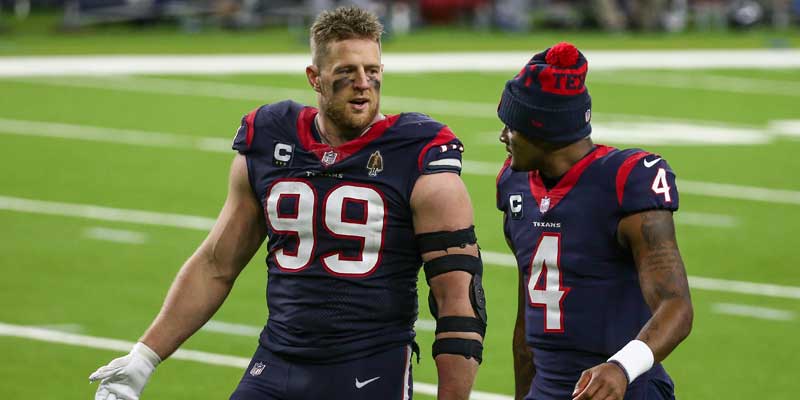Breakdowns
2/17/21
5 min min read
Why the 2021 NFL Offseason May Be More Challenging Than Ever


Looking back at last offseason and all the challenges it brought, most of ithat was related to practice time and offseason preparation. In my opinion, that was predictably overrated and ended up being pretty inconsequential. Just look at the team that won the Super Bowl. The Tampa Bay Buccaneers probably had as much or even more roster turnover than any team in the league. The “continuity” factor going into last season was totally overblown.
This offseason presents far greater challenges. The transactions we see will not be close to normal. The shrinking salary cap by itself is a big change. With the pandemic likely forcing the cap to decrease for the first time, there will be more teams that won’t have free agency flexibility. We haven’t seen that in about a decade. The number of veterans without guaranteed money that will be at risk of getting cut is greater than it has been in a long time. I also expect teams that have veterans with guaranteed money remaining will look to convert some of that into signing bonuses, allowing them to prorate the money into the future.
Which gets us to this question: How much will teams “go for it” this year and risk borrowing cap dollars from the future to do so?
Right now, it looks like the cap will be in the low $180 million range. If there is any closure on the league’s new TV deals -- or even any significant progress -- I think the league would push some of that expected revenue into this year to help flatten the cap out.
Importance of the tag
I think the biggest question that remains, though, is: What is going to happen in free agency this year, including with some of the top guys? Will they still get the money they would have gotten in another year? This is what teams and agents alike are trying to figure out right now. I also think that puts us in a position this year in which the franchise tag could be most beneficial for the player. It allows them to get a sizable amount of guaranteed money and allows them to enter free agency next year, when there could be more league-wide cap space than we have seen in a long time.
Even this aspect provides an interesting dynamic for certain teams.
If a team has a player it would like to keep solely for one more season while they develop a younger player, the tag could have an advantage for the team (the tag number for each position will dip with the decreasing cap). However, if there is a player the team views as a long-term asset, they may be able to get him on a discount this season -- but you risk exposing him to free agency next year with an artificially high tag number and multiple teams expected to have ample cap space. Most of the time, players do not want to get tagged. Historically, though, getting tagged is more beneficial than they initially realize. This year could be a prime example of that.
For example, the tag for an offensive lineman this season will be around $13.5 million. If the player suspects he can earn around $15 million per year on a cap that is in the low $180’s, that player might be better off accepting the tag. If he is worth $15 million this year on a $185 million cap, what is he going to be worth next year when the cap is $215-220 million? You will also have a good bit of teams in a position to openly bid. Good agents will understand this leverage.
What if…
As teams and players prepare for this, they also need to have in the back of their minds that the pandemic could last longer than expected. Everyone assumes we will be back to normal by the fall (as do I), and the cap will jump. That may not be what happens. If, God forbid, vaccines are not as effective and the NFL is forced to have another year like last year, the cap will not be jumping. If the league had previously borrowed against future revenues for this year’s cap, some teams could be in trouble next year.
Teams need to have contingency plans for this and be careful not to borrow too much into next season. We assume the offseason will be like last year and fans will be in the stands in the fall, but that is something that teams cannot anticipate with absolute certainty. Seventeen regular-season games are also on the table, so that could provide some extra relief. Franchises cannot just assume the best-case scenario and ignore all possibilities. What if there is no 17th game? What if streaming deals do not accelerate quickly? What if we are all not back in the stands next year and economics are still depressed, not just in the NFL but countrywide? Every team needs to address plans for all this, or they are being foolish.
Draft season
After free agency, the next phase of the NFL offseason that is different will be the draft. My own belief, from my time in the league, is that there are as many times that a player is pushed too far up draft boards as there are players that get knocked down draft boards incorrectly based on pro day workouts or their combine workouts. Therefore, I do not expect the lack of a combine to have a big net difference. I still expect hits and misses, but I do not expect a dramatically different rate of either. The smart teams build their evaluations based on tape. The combine is largely used for medical or interview purposes, and most of that can be replicated remotely. You may not get face-to-face with as many guys and may feel different for teams based on the quantity of in-person workouts they can attend, but it is not a big change.
I am sure it feels much different for teams because they have been used to things happening a certain way for years, but I actually think teams that are drafting correctly are overwhelmingly reliant on tape evaluation, information from the school through an area scout, the interview process and the medicals. All of that should approximate normally.
Much less important for the smarter teams are the combine workouts. All those things matter, but in my experience the workouts matter significantly less. You also may have less tape on guys, but most guys have been playing for a while and have a few years of tape to evaluate. I think you are making a mistake if you let those other factors dictate decisions. If you have even 15 games of tape over a player’s career and have talked to the player and his coaches at the school, in addition to the strength coach and others around the building, most likely you have enough information. Let the tape drive your pick.








